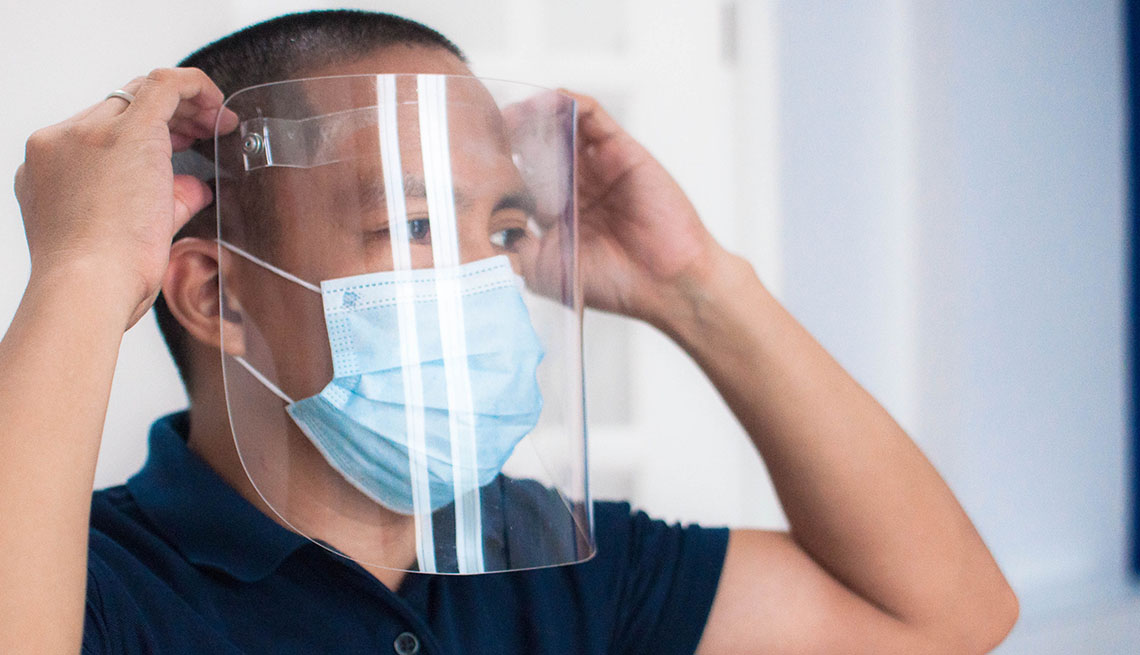Play all audios:
Face shields are a common sight in doctors’ offices and hospitals. And as the pandemic drags on, they are becoming more prevalent among the public, too. But how do they work? And just how
effective are they when it comes to protecting against the new coronavirus? AARP asked the experts for their take on the advantages and disadvantages of face shields. PRO: FACE SHIELDS
PROTECT THE ENTIRE FACE One of the benefits of face shields is that they protect the entire face, including the eyes, which along with the nose and mouth can be a gateway for the coronavirus
and other germs to enter the body. The plastic panel that hangs from the top of the forehead and extends below the chin prevents large respiratory droplets that are thought to carry the
virus from reaching these areas of potential infection. Face shields also reduce the likelihood that you'll introduce virus-packed particles on your own — think of them as a dog cone
for humans, says Gonzalo Bearman, M.D., a hospital epidemiologist and chair of the Division of Infectious Diseases at Virginia Commonwealth University (VCU) Health. They keep you from
touching “your hands to your eyes and nose and mouth. If you're wearing one, it's pretty hard to do that,” he says. Currently, the Centers for Disease Control and Prevention (CDC)
does not recommend face shields for the general public, especially as a substitute for face masks. (Experts in favor of them say if you're going to wear one, it should be _in addition
to_ a cloth face mask that covers your nose and mouth.) The agency, however, does advise health care workers to wear them (or some other form of eye protection) along with face masks,
especially in areas that are experiencing moderate to substantial spread of COVID-19. And Eli Perencevich, M.D., professor of internal medicine and epidemiology at the University of Iowa
Carver College of Medicine, says concerned individuals, and notably those at high risk for severe illness from COVID-19, should consider doing the same. "Health care workers wear masks
and face shields because it's dangerous in health care, but when you have a pandemic, it's dangerous in the community,” says Perencevich, who coauthored a letter in the _Journal of
the American Medical Association_ (_JAMA_) championing more widespread use of face shields. “The whole point of face shields is to get people to think about personal protective equipment in
the community, and masks alone are not personal protective equipment.” A recent _JAMA_ report found that when community health workers added face shields to other protective equipment (face
masks and gloves), COVID-19 infection rates among the workers dropped to zero. Similar findings have been published in _The Lancet_: Researchers looked at studies evaluating the
effectiveness of nonpharmacologic interventions and found that eye protection was associated with a lower risk of virus infection. “Eye protection is typically underconsidered and can be
effective in community settings,” the report's authors write. "It's double protection,” Perencevich says about layering a face shield over a cloth face covering. “The face
shield will protect the mask from being contaminated and then block additional droplets from your whole face, including your eyes.”

